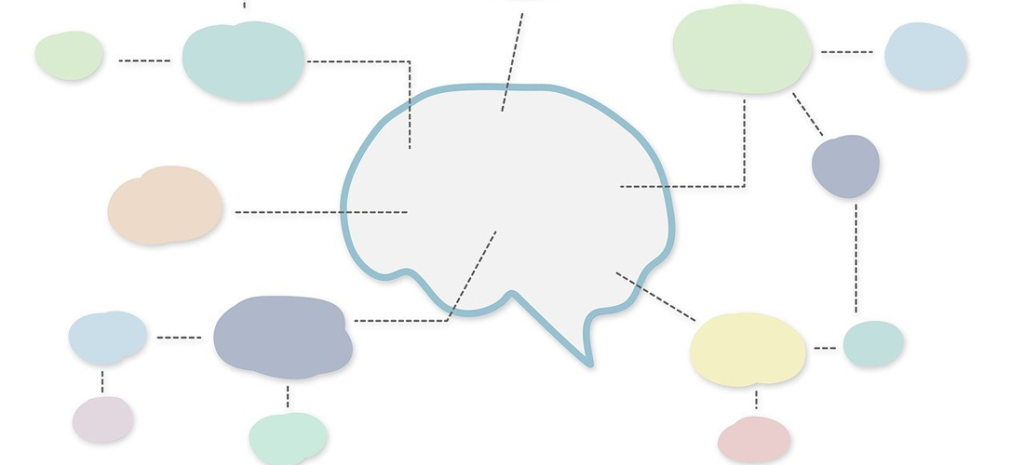Are you looking for a way to boost your learning potential? Mind mapping for learning is an effective technique that can help you unlock new levels of understanding and creativity. By visualizing the information in a structured and organized manner, mind mapping provides an effective way to brainstorm ideas, make connections between concepts, and remember important details. In this blog post, we’ll discuss how using mind mapping for enhanced learning can be beneficial. We’ll explore the benefits of mind mapping as well as provide tips on how to create powerful mind maps that will improve your ability to learn. With these strategies and tools at your disposal, you’ll be able to take control of your learning process like never before!
- What is Mind Mapping?
- Benefits of Mind Mapping for Learning
- 1. Enhanced Memory Retention
- 2. Improved Comprehension
- 3. Organized Representation
- 4. Boosted Creativity
- 5. Effective Note-taking Alternative
- 6. Time Efficiency
- 7. Tailored Learning Experience
- 8. Reduced Information Overload
- 9. Problem-Solving Facilitation
- 10. Flexibility and Versatility
- 11. Long-term Retention
- Step-by-step Guide to Crafting a Mind Map
- 1. Choose Your Topic
- 2. Begin with a Blank Canvas
- 3. Place the Central Idea
- 4. Create Main Branches
- 5. Add Secondary Branches
- 6. Use Keywords and Images
- 7. Connect Ideas
- 8. Utilize Colors and Visuals
- 9. Stay Organized
- 10. Be Open to Creativity
- 11. Review and Revise
- 12. Share and Collaborate (if applicable)
- 13. Use Digital Tools (optional)
- 14. Practice and Iterate
- Final Thoughts
- You might also like:
What is Mind Mapping?
Mind mapping is a visual thinking and learning technique used to explore ideas, organize information, and clarify relationships. This technique was developed by Tony Buzan in the 1970s as a way to better understand how the brain works. It involves taking an idea or concept and writing it down on a piece of paper or whiteboard, then using connecting lines and other symbols to add branches, sub-branches, and related details that fill out the concept more completely.
Mind mapping is particularly useful for creating connections between concepts that may have previously seemed unrelated. The visual aspect of mind mapping also helps to stimulate creativity by encouraging free association between ideas – something which is often difficult to do with traditional linear note-taking methods. Furthermore, many people find it easier to remember information when it’s presented in this visually stimulating format.
Mind mapping is not only used for individual learning but can also be applied in group activities such as brainstorming or problem solving sessions. It’s often used as an effective way to quickly generate new ideas or gain insight into complex problems. In this way, mind mapping can be used to help foster creativity among groups and improve communication between members.
Benefits of Mind Mapping for Learning
Mind mapping offers a wide range of benefits for learning and understanding information. Some of the key advantages include:
1. Enhanced Memory Retention
Mind mapping engages both the left and right hemispheres of the brain, facilitating better memory retention. The combination of visual elements, colors, and keywords helps to encode information in a way that is easier to remember.
2. Improved Comprehension
By creating visual connections between different concepts, mind maps promote a deeper understanding of the subject matter. Learners can see how ideas are interconnected and build a holistic view of the topic.
3. Organized Representation
Mind maps provide a clear and organized representation of complex information. The hierarchical structure with central ideas and branches makes it easier to see the relationships between different pieces of information.
4. Boosted Creativity
Mind mapping encourages creative thinking as learners explore ideas and concepts in a non-linear way. This approach can lead to new insights and innovative solutions.
5. Effective Note-taking Alternative
Mind maps are a dynamic and interactive note-taking method, offering a more engaging and visually appealing alternative to traditional linear notes. This can lead to more active participation during lectures or reading sessions.
6. Time Efficiency
Once mastered, mind mapping can significantly speed up the learning process. As learners create concise and interconnected maps, they spend less time on review and revision.
7. Tailored Learning Experience
Mind maps are highly adaptable to individual learning styles. Visual learners can benefit from the graphics and colors, while auditory learners can use them in conjunction with verbal explanations.
8. Reduced Information Overload
When studying complex topics, mind maps help to break down information into manageable chunks, reducing the feeling of overwhelm.
9. Problem-Solving Facilitation
Mind maps are excellent tools for brainstorming and problem-solving exercises. They allow learners to explore different angles and potential solutions systematically.
10. Flexibility and Versatility
Mind maps can be used in various contexts, from academic subjects to planning personal projects or organizing thoughts for writing. They are valuable tools across all disciplines.
11. Long-term Retention
Mind mapping supports long-term memory by reinforcing connections between concepts. Periodically reviewing mind maps helps reinforce the learned material over time.
Overall, mind mapping is a powerful and versatile learning tool that can benefit learners of all ages and levels of education. Its ability to enhance memory retention, promote comprehension, and stimulate creativity makes it a valuable addition to any learner’s toolkit.
Step-by-step Guide to Crafting a Mind Map
1. Choose Your Topic
Start by selecting the main topic or central idea for your mind map. This could be a subject you’re studying, a project you’re working on, or any concept you want to explore.
2. Begin with a Blank Canvas
Use a large sheet of paper, a whiteboard, or a digital mind mapping tool to create your mind map. Start with a blank canvas where you can freely visualize and organize your thoughts.
3. Place the Central Idea
Write the central idea or main topic at the center of the canvas. This represents the core theme or subject of your mind map.
4. Create Main Branches
Identify the key sub-topics or main categories related to the central idea. Draw lines radiating outward from the central idea and label each line with a main branch representing these sub-topics.
5. Add Secondary Branches
For each main branch, add secondary branches to further break down the information. These branches will contain more specific details or subcategories related to the main topics.
6. Use Keywords and Images
Instead of writing long sentences, use keywords or short phrases to represent information on each branch. Consider incorporating relevant images or icons to make the mind map more visually appealing and memorable.
7. Connect Ideas
As you add branches and sub-branches, look for connections and relationships between different concepts. Use lines or arrows to link related ideas, showing how they connect to one another.
8. Utilize Colors and Visuals
Incorporate colors to distinguish between different branches and highlight important information. Color-coding can aid in memory recall and organization.
9. Stay Organized
Ensure the mind map remains organized and easy to follow. Avoid overcrowding and keep the structure clear and visually appealing.
10. Be Open to Creativity
Don’t be afraid to get creative with your mind map. Experiment with different layouts, designs, and visual elements that resonate with your learning style.
11. Review and Revise
Take the time to review and revise your mind map regularly. This will help reinforce the information and make any necessary adjustments or additions.
12. Share and Collaborate (if applicable)
If you’re working on a group project or brainstorming session, consider sharing your mind map with others. Collaboration can lead to new insights and ideas.
13. Use Digital Tools (optional)
If you prefer a digital approach, explore various mind mapping software or apps that offer additional features like cloud storage, collaboration, and easy editing.
14. Practice and Iterate
Practice mind mapping regularly to improve your skills. As you become more familiar with the technique, you can refine your mind mapping process and adapt it to different learning tasks.
Remember, mind mapping is a flexible and personalized technique, so feel free to tailor it to your specific needs and preferences. The goal is to create a visual representation that enhances your understanding and aids in the learning process.
Final Thoughts
Mind mapping is an incredibly powerful tool for enhancing learning and increasing productivity. It can be used to organize complex topics, generate new ideas, brainstorm solutions to problems, develop creative strategies, or review information before a test. No matter what your goals are in the classroom or workplace, mind mapping can help you achieve them faster and more effectively than ever before. With its simple yet flexible structure and wide range of applications, it’s no wonder why so many people have embraced this technique as part of their daily lives. So give it a try today – you may just find that it makes all the difference!
You might also like:
- Online Learning Strategies: 10 Techniques for Best Performance
- Top 13 Learning Strategies to Supercharge Your Learning Journey


